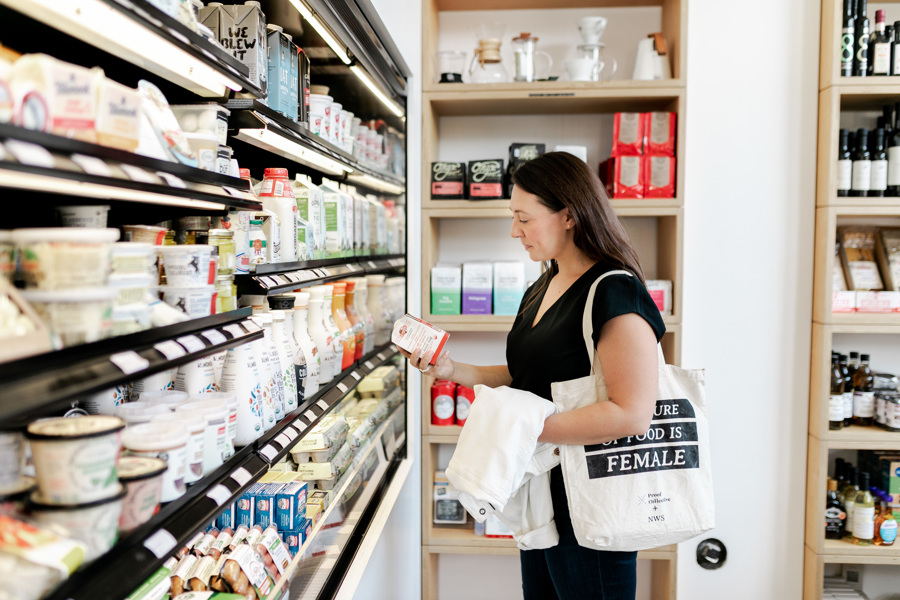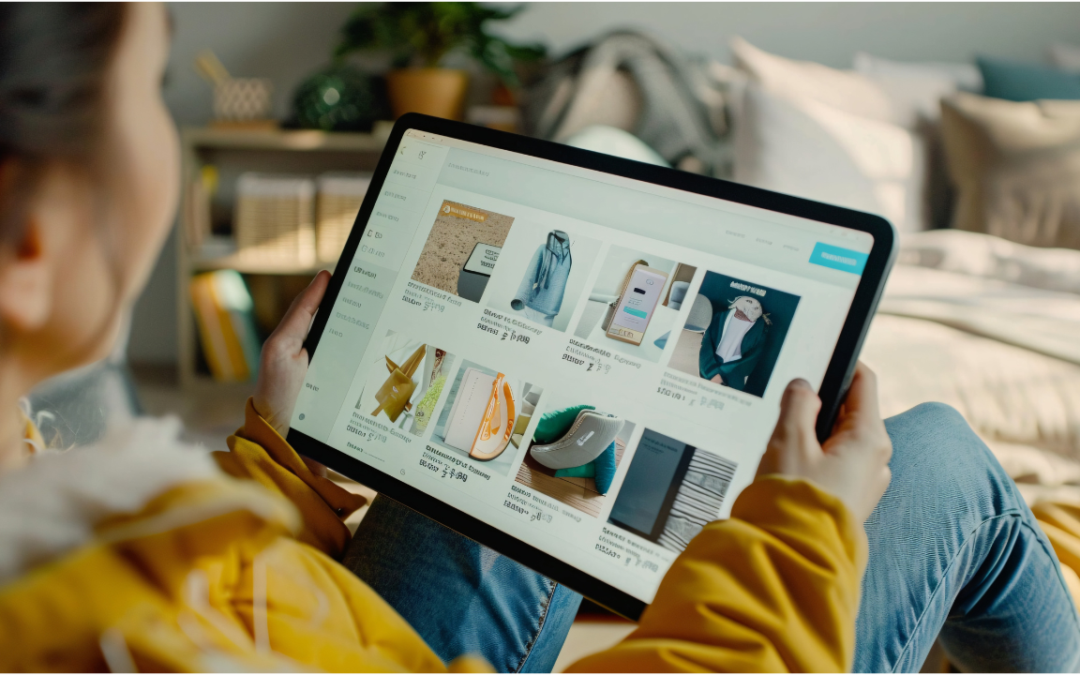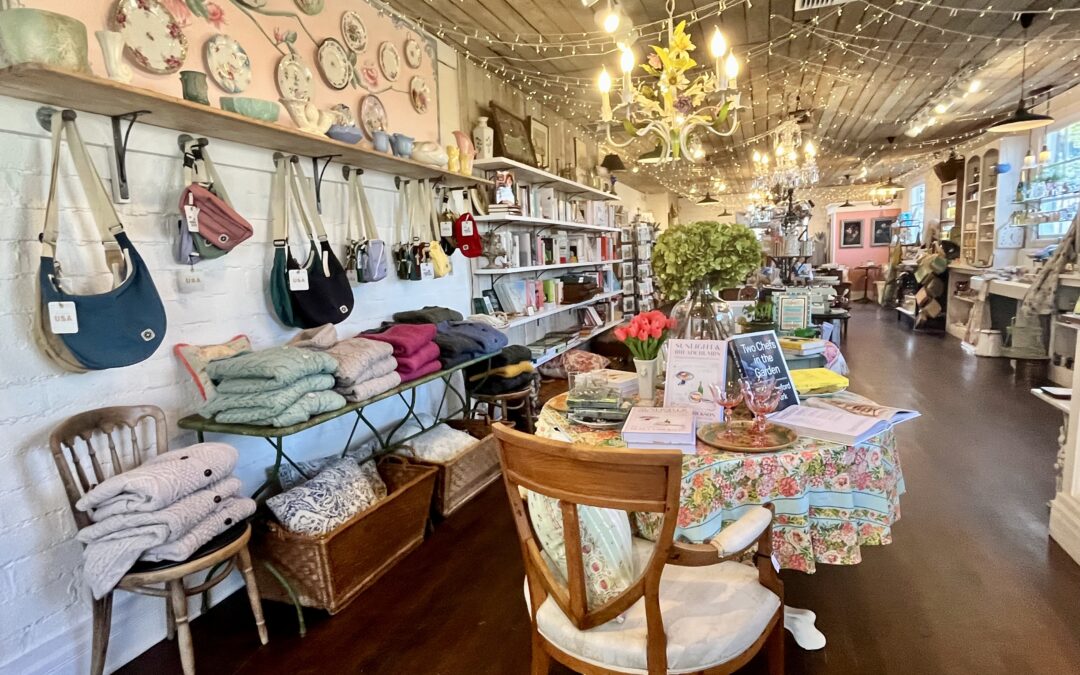Last month, ASD Market Week launched The Retail Review, a series of guest articles from industry experts across retail, distribution, and wholesale in addition to importing and exporting. As our first guest columnist, we’re happy to welcome back Allison Ball, a former grocery buyer turned wholesale consultant, and the creator of Retail Ready®, an online course for producers of packaged products in the food industry, who recently wrote an article for our blog explaining how online marketplaces can grow revenue for specialty and gourmet food suppliers. With many states tightened restrictions on outdoor dining and reinforcing stay-at-home orders, the need for suppliers to connect digitally with buyers is more important than ever. Continue reading to learn why online platforms are here to stay and how you should be using them to stand out right now.
In my years as Grocery Buyer, I had a love/hate relationship with trade shows. In the food industry, there are several big shows each year that would take me down to Anaheim, across the country to Baltimore, flying to NYC in the middle of the summer, and navigating downtown San Francisco in a typically wet, cold January. Smaller shows would bring me to Portland, Las Vegas, and Chicago. It seemed like every quarter brought an exciting, not-to-be-missed opportunity to discover new products, connect with emerging vendors, and ensure that I had the hottest products on my shelves.
The challenge with that? Well, I also had a grocery department to run. While my priority was ensuring that we had products that captured the attention of our shoppers, that put us on the map as a destination specialty grocery store, and that ensured we had high sales week in and week out, I also spent about half of my week managing my staff, building beautiful displays and making seasonal merchandising changes in-store, performing category reviews and deciding which products needed some love and which were going to be discontinued.
It didn’t stop there, I was also in charge of overseeing our inventory and spoilage, managing price changes and promotions, meeting with local vendors and trying samples that were dropped on my desk, and running floor shifts. Simply put: I was a typical Buyer, spread too thin and responsible for many, many moving parts of a successful retail store.
While the arrival of COVID-19 brought many challenges to the retail industry, one of the silver-linings that it ushered in is the acceptance of the online trade show, and virtual Buyer meetings. Even though our industry is eager to meet in-person again and connect at a physical trade show booth, I’m convinced that the concept of an online trade show is here to stay, and that we’re going to see more and more options to connect, digitally, even when in-person events resume. Why? I’ve got three inarguable reasons why those virtual shows and online meetings aren’t going anywhere:
Online Marketplaces & Trade Shows Save Time
We’re all busy in the retail industry. Remember that list of responsibilities that I cited above? Typical Buyers are spread too thin and pulled in a million different directions, just as CPG founders are. When we all have full job descriptions and responsibilities, we recognize that time is our most valuable resource.
When we don’t have to get on a plane, fly across the country, stay in a hotel for a few nights, and be physically away from our workplace, it’s a huge time saver. Imagine being able to login to an online trade show, meet with selected vendors, and make product decisions without having to devote the travel time, hours of walking the tradeshow floor, and the extra nights in a hotel? Yeah, I’m excited about that too.
Online Trade Shows Save Money
All of those flights, hotels, meals, and travel expenses add up when a Buyer decides to attend a tradeshow, particularly when a company decides to send their entire Buying team. From a brand’s perspective, in addition to all of the travel expenses… designing and building a physical trade show booth is costly, shipping samples and handing them out to anyone who walks by and wants to try your product, and printing all of your promotional materials and collateral adds up. Our margins are already tight in the CPG industry, and when we’re able to remove the expenses of traveling to and attending an in-person, multi-day tradeshow, it’s a huge win.
Online Trade Shows Support Equal Opportunities for Emerging Brands
Knowing how much time and money it takes to commit to attending or displaying at a tradeshow, many young brands decide they simply can’t afford to invest in in-person shows in the first few years of their business, until they have a more robust marketing budget. It’s a shame to think of all the wonderful, inventive, potentially successful products that never came across my radar, just because the brand didn’t have it in the budget to get in front of me (and other buyers!) at the massive, in-person trade shows.
Online trade shows level the playing field, allowing more emerging brands to step into the spotlight, without having to invest thousands of dollars just to get a booth space and HOPE that the right buyer walks by! By moving online, we’re able to support and encourage brands that might otherwise be overlooked, and I’m very excited by this.
The challenge comes up, however, as more and more brands are getting savvy about dialing-in their online tradeshow experiences and understanding exactly how to stand-out in a sea of Zoom meetings and virtual connections. Despite having months of experience with online meetings, brands are still making crucial mistakes, causing the Buyers to start scrolling their emails in another browser tab as they lose interest, or leave the meeting all together, clicking away to the next potential vendor.
How can you succeed in these virtual trade shows? Let’s remember the foundations of a great online meeting by turning to the three “P’s”: Plan, Practice, and Pitch.
How to Use Online Marketplaces & Trade Shows to Your Advantage
Plan: It sounds obvious, but most brands skip this step. After all, you’ve probably been pitching your products for years and years, and know exactly how to talk about your brand, get that Buyer to pick up a sample, and consider placing the first order. It’s a critical mistake if you think that pitching in-person translates to pitching online.
Long before you get in that virtual meeting, you should script out what you’re going to say, how you’re going to present your information, and what you’re going to ask that Buyer to do moving forward. I have my Retail Ready® students write this out, word for word, before they even think about improvising off-script. You can work up to that, but at the beginning the plan will be crucial.
Practice: Practice makes perfect, and it couldn’t be more applicable for online trade shows. I can’t believe how many virtual pitches I’ve recently sat in on where the Founder still doesn’t know how to turn on their video, connect to audio, share their screen, or locate the Q&A chatbox.
When you show up as unprepared and fumble through the first 30 seconds of your pitch, you’ve lost your viewer. Ensure that you know exactly how to use the online platform that you’re pitching through, that your audio & video is dialed in, that your lighting looks great, and that your WiFi is strong. This is a competitive landscape, and if you’re not capturing and holding that Buyer’s attention, some other brand WILL be. Don’t let them lose interest just because your video is too dark because you forgot to open the curtains!
Pitch: This is where the magic happens! The most common mistake that I see brands make when you do the pitch is that you almost always talk more about YOU and your brand, rather than what you’ll do for THEM, the retailers. Remember, retailers bring in new products in order to boost sales or margin in your category, so it’s your job to convince them that your product line is going to do just that.
When you build a pitch that is based on how delicious, sustainable, ethically made, or beautiful your products are – you miss the mark. Make sure you’re crafting a pitch that articulates how you’re going to help that Buyer reach their sales goals, and you’ll be one step closer to getting a “YES” from that new account.
When I was a Buyer, I would have loved the opportunity to meet with brands over Zoom rather than flying around the country to trade shows, or arranging sample days each week, meeting with new vendors face-to-face in between busy order & receiving deadlines. While the in-person connection will never fully go away (and there’s certainly an advantage to meeting face-to-face when possible!), the online experience brings so much value and opportunity to our retail industry that it’s here to stay, and I’m thrilled.
To learn more about Allison Ball, visit her website here and find her weekly on Food Biz Wiz®, a podcast about wholesale strategy, or access her advice daily with a physical planner, specifically made for the packaged food industry. Alli has helped hundreds of emerging brands understand what it takes to get their products on the retail shelf- and keep them thereby sharing the behind-the-scenes secrets and thought process of wholesale buyers as they assess new products for their stores or online marketplace.








0 Comments